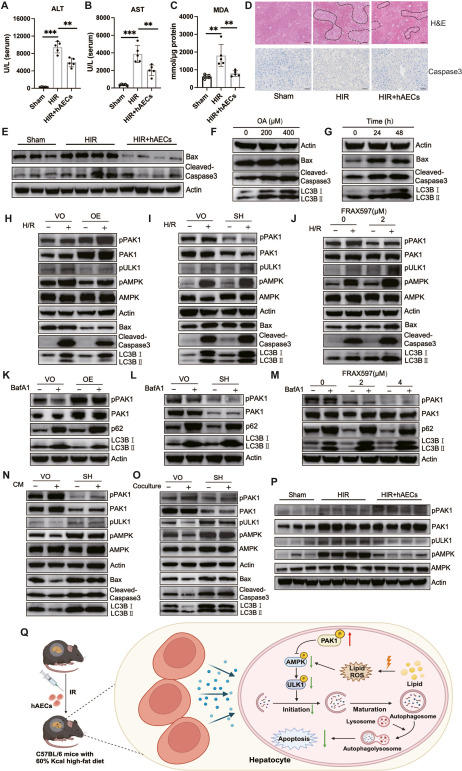
Human amniotic epithelial cells alleviate ischemia-reperfusion injury of steatotic livers through mediating PAK1/AMPK-dependent autophagy


Hepatic steatosis is prevalent worldwide and is characterized as excessive lipid accumulation with/without inflammation and injury in the liver. Hepatic ischemia-reperfusion (HIR) injury commonly occurs in the process of hemorrhagic shock, liver surgery, and liver transplantation, and impairs liver function by inhibiting the electron transport chain in mitochondria during ischemia stage and producing large amount of reactive oxygen species (ROS) during reperfusion stage.1 Steatotic livers are more susceptible to HIR injury due to redundant lipid ROS and immune imbalance, which could induce dysregulation of autophagy.2 Therefore, it is of great importance to explore viable strategies for the protection of steatotic livers from HIR injury. Human amniotic epithelial cells (hAECs), which are regarded as a promising cell type for cell-based therapies due to low immunogenicity and tumorigenicity, stem-cell-like plasticity, and paracrine properties, have been discovered to act in anti-inflammation and function repair of multiple tissues and organs (e.g., skin, liver, kidney, and lung).3 However, the role of hAECs in steatotic liver HIR injury has not been reported. Here, our results showed that hAECs could ameliorate HIR injury of steatotic livers through modulating p21-activated kinase 1 (PAK1)/AMP-activated protein kinase (AMPK)-dependent autophagy.
